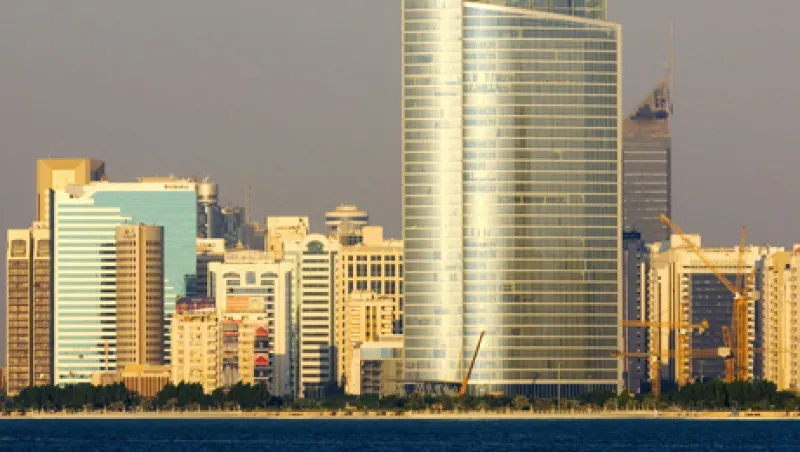On September 13, the Abu Dhabi Investment Authority, which ranks as the largest sovereign wealth fund in the world according to Institutional Investor’s annual survey with $600 billion under management, released its second annual review. In keeping with the precedent set by its first review, released in March 2010, the new document offers very few details about the vast fund’s investment activities over the past year.
ADIA pointedly does not describe its annual review as a report, and with reason — it doesn’t give many statistics. ADIA sharply limits what it says about the performance of its massive investment portfolio and discloses only the barest details of its asset allocations. Unearthing information requires patience and an appreciation of nuance. In its most recent review, for example, ADIA disclosed its annualized returns over 20-year and 30-year periods. Last year, ADIA’s portfolio achieved a 20-year annualized return of 7.6 percent, which indicated that the fund had achieved positive performance in 2010, given that 2009’s 20-year annualized return was just 6.5 percent. Its 30-year annualized return was 8.1 percent in 2010, up from 8.0 percent at the end of 2009.
Those details are about as granular as ADIA gets, and stands in stark contrast to the recent annual report of China Investment Corp., which revealed a shift in its asset-allocation strategy to reflect the growing importance of long-term investments and a big move into alternative investments last year. ADIA’s disinclination to provide more data frustrates analysts who provide policy-oriented coverage of the sovereign wealth fund community. “This is the only example of robust financial information that I’ve found in the report,” says Sven Behrendt, founder and managing director of Geoeconomica, a Geneva-based political and economic consulting group. “And these are not even annual returns.”
Understanding how ADIA achieved those results remains largely a mystery. In an introductory letter to the review, Managing Director Hamed bin Zayed Al Nehayan stated that ADIA had “continued to benefit during 2010 from its decision a year earlier to tilt exposures in the portfolio towards asset classes and regions able to benefit from better growth prospects.” Based on macroeconomic data, that statement would seem to indicate that ADIA had turned its attention away from the slow-growing economies of the developed world and is now paying more heed to faster-growing emerging markets.
Documenting such a shift in its asset allocation strategy, however, is difficult. Unlike many of its peers, ADIA does not disclose actual asset allocations; it simply provides neutral benchmark ranges — within which, actual asset allocations may fluctuate widely. Those broad benchmark ranges have remained fixed since 2009. Based on information that the former Managing Director, Ahmed bin Zayed al Nehayan, Hamed’s brother, shared with Businessweek in a rare interview in June 2008, however, several changes have been made in the aftermath of the financial crisis.
Since 2008, ADIA has lowered its asset allocation target range for investments in developed market equities to between 35 and 45 percent, down from 45 to 55 percent previously. Its benchmark range for emerging market equities has, unsurprisingly, climbed, to 10 to 20 percent from 8 to 12 percent previously. The only other significant change in ADIA’s asset-class benchmark ranges occurred in cash, where the minimum remained fixed at 0 percent but the maximum increased by five percentage points, to 10 percent. The fund hasn’t appreciably changed its target range for other asset classes since 2008.
Despite its reluctance to reveal its actual asset allocations, ADIA made a point of devoting more space in the 2010 review to broad-based discussions of individual asset classes, which gave a few, fleeting glimpses of its internal workings. According to the review, 80 percent of ADIA’s assets are currently managed by external fund managers, whose activities, ADIA says, are monitored daily; the balance of assets are managed internally. Those percentage have not changed since 2009. Among the developments at ADIA in 2010, however, was a decision to create two new equity portfolios, Active Latin America and Active India, in the context of its internal equities department. The move may well reflect ADIA’s earlier decision to tilt its equities exposure to emerging markets. In its alternative investments department, ADIA revealed that it had funded several early-stage or emerging managed-futures funds, which will sit within their own a separate portfolio for promising managers, created in 2009, until they prove worthy of being incorporated in the main managed funds portfolio. And in its private equties department, ADIA continued to gradually broaden its geographic exposure to investments in developing private equity markets, which it defines as parts of Asia, Latin America and Africa — as well some developed markets such as Australia.
Beyond those tantalizing glimpses, however, ADIA steadfastly resists providing any granular financial information that might compromise its competitive advantage in global investment markets. But, as the sovereign wealth fund struggles to find the right balance between protecting its commercial interests and providing information for its stakeholders, it is offering up a few more hints about its investment activities. Although it comes late in the year, the publication of its second annual review at least confirms that ADIA has made another “positive step towards improved transparency,” Behrendt says.






